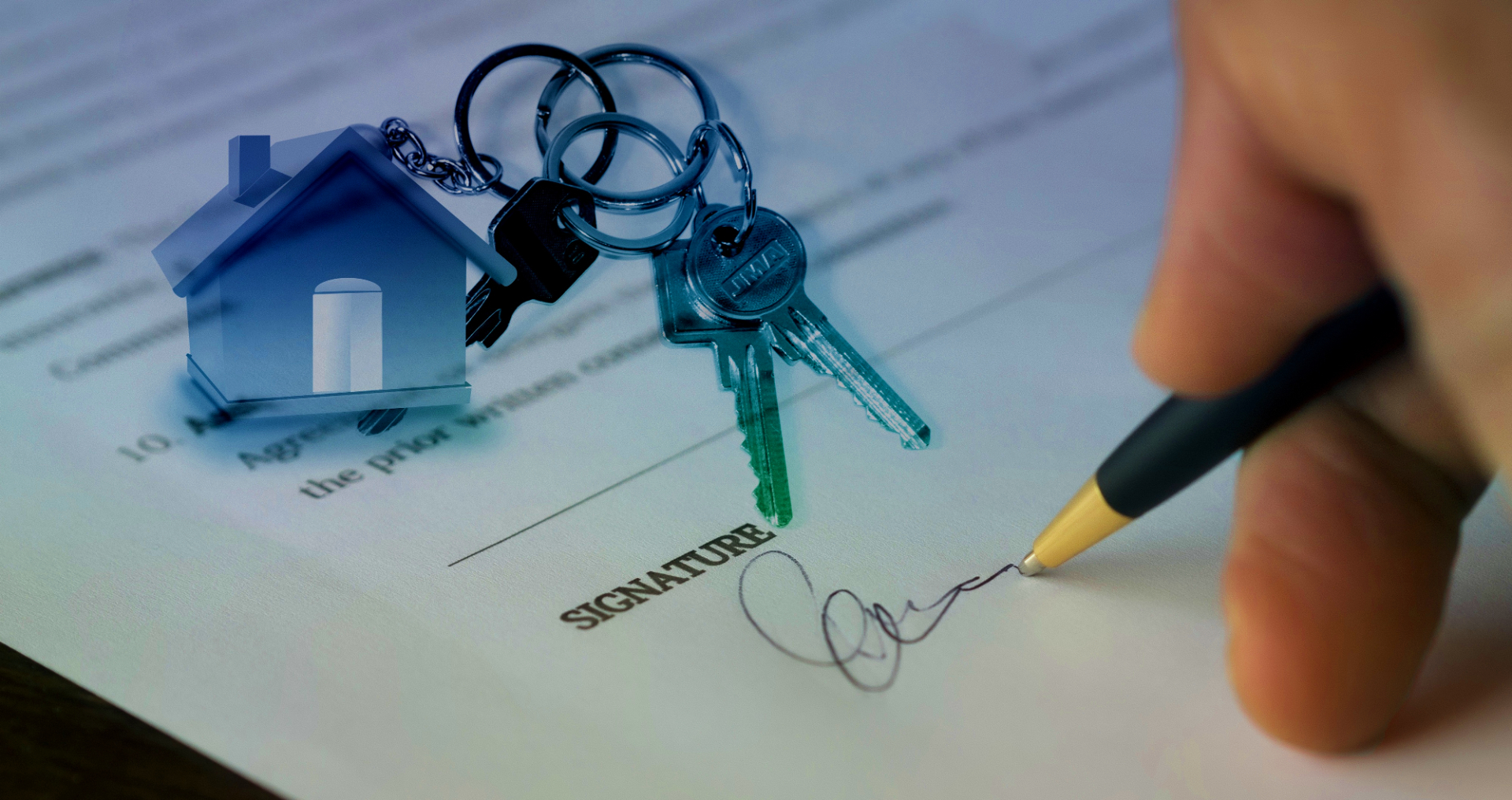Buying a house can be an exciting and emotional process. Before starting your home search, you’ll want to understand the ins and outs of the home buying process. This will empower you to make decisions that are the best for your family — and your wallet.
What to consider:
Is now a good time to buy a house?
Based on mortgage and home-price trends, it’s a relatively good time for potential home
buyers. There are opportunities to lock in an affordable mortgage because experts believe interest rates will stay low this year. The 30-year fixed-rate mortgage hovered below 4 percent in early January.
Home prices, meanwhile, aren’t getting any cheaper. Annual home price growth is expected to increase by 5.6 percent by September according to real-estate data firm CoreLogic. Waiting too long to buy might mean getting priced out of more-desirable neighborhoods.
Taking the leap to home ownership can provide a feeling of pride while boosting your long-term financial wellness, if you go in well-prepared and with your eyes open.
When thinking about buying a home, consider whether you want to put down roots or maintain flexibility with your living situation. How secure is your job, and can you comfortably budget for home repairs and maintenance on top of monthly housing payments? Finally, are you ready to stay in one place and do you have kids or family members to consider?
When should I buy a house?
Spring is the traditional start of the home-buying season, with many listings hitting the market, but it’s also a competitive time of year. Buyers can sometimes snag great in the off-season, such as the dead of winter or on holidays when fewer people are looking. More important than the season, though, is your own financial readiness. This means having your finances organized and your credit in order so that you’ll be able to secure a reasonable mortgage in a smooth fashion.
In addition to a down payment, potential home buyers should have enough money set aside to cover the closing costs, which can range from 2 percent to 4 percent of the purchase price. When budgeting for the monthly payments, factor in not only the principal amount and interest, but also property taxes, homeowners insurance, homeowners association fees and (if putting down less than 20 percent) private mortgage insurance. Don’t forget to set aside money for ongoing maintenance and those unexpected repairs that are bound to pop up.
Here’s a step-by-step guide on buying a house:
1. Understand why you want to buy a house
2. Check your credit score
3. Create a housing budget
4. Save for a down payment
5. Shop for a mortgage
6. Hire a real estate agent
7. See multiple homes
8. Make an offer
9. Get a home inspection
10. Negotiate repairs and credits
11. Secure your financing
12. Do a final walk-through
13. Close on your house
13 steps to buy a house
1. Understand why you want to buy a house
Purchasing a home is a major decision that shouldn’t be taken lightly.
If you’re not clear on why you want to buy a house, you could end up regretting your decision.
Key takeaways:
• Make a list of what’s important to you in a home. Are you craving stability? Is location the top priority? Any must-have amenities?
• Does it make sense for you financially? Would renting for another year or two improve your financial standing?
• Are you prepared for the responsibility of maintaining a home?
2. Check your credit score
Checking your credit score will help you determine your financing options; lenders use it (among other factors) to set your loan pricing and see if you’re able to repay your mortgage. The better your credit history, the better the chances you’ll have of securing financing with the best terms and rates.
How do I get started?
You can get your credit score from each of the three major credit reporting agencies — Equifax, Experian and TransUnion — for a nominal fee. Your bank or credit card company might offer free access to your score or credit report, too.
Key takeaways:
◦ Consider how different credit score ranges impact your interest rate, monthly payments and total interest.
Pull your credit reports from each of the credit bureaus for free every 12 months at AnnualCreditReport.com. If you discover any discrepancies, contact each agency and report the error.
3. Create a housing budget
Setting a realistic budget for your new home will help you know what you can afford and how much your all-in costs will be.
How do I get started?
The purchase price isn’t the whole picture. Carefully factor in other expenses to determine what you can afford.
Key takeaways:
• Determine the maximum loan you qualify for.
• Decide how much you can set aside for a down payment, closing costs and ongoing maintenance costs.
• Include a buffer. “I recommend a buyer save $15,000 to $25,000, in addition to their down payment, to cover closing costs or any emergency maintenance that may arise after you close,” Georges says.
• See if your monthly budget can handle the mortgage payment along with other bills such as day care, tuition, utilities, groceries and more.
4. Save for a down payment
To avoid private mortgage insurance, or PMI, you’ll need to put down at least 20 percent. Some lenders offer mortgages without PMI with lower down payments, but expect to pay a higher interest rate. “Being willing to buy with less of a down payment gets you into your new home faster, but putting more down lowers your costs,” says Casey Fleming, a mortgage adviser with C2 Financial Corp. “The right decision for any particular person or family is highly personal.”
How do I get started?
Research the down payment requirements for the loan you want so you know exactly how much you’ll need. If a friend, relative or employer has offered to provide a down payment gift, initiate a conversation early on to learn how much they plan to contribute and if there’s any shortfall you’ll need to cover.
Key takeaways:
• Consider options backed by the federal government if you don’t have much saved for a down payment. FHA loans, insured by the Federal Housing Administration, require just 3.5 percent down. VA loans and USDA loans require no down payment.
• Conventional loans backed by Fannie Mae and Freddie Mac require just 3 percent down.
• Look into a local or state first-time home buyer assistance program to help with closing costs or your down payment.
5. Shop for a mortgage
Getting pre-approved for a mortgage is helpful when you make an offer on a house, and it gives you a firmer handle on how much you can afford.
How do I get started?
Shop around with at least three lenders or a mortgage broker to increase your chances of getting a low interest rate.
“You should definitely shop around for a mortgage,” Fleming says. “It doesn’t take much to get licensed to sell mortgages, but it takes years to understand how the products work and how they impact borrowers. It’ll save you heartaches and, most likely, money in the long run.”
Key takeaways:
• Work with an experienced mortgage lender who can walk you through all of the options and overall costs.
• Ask what first-time home buyer programs or other incentives are available to you.
6. Hire a real estate agent
An experienced real estate agent can save you time and money by helping you find your dream home and negotiate with the seller on your behalf.
How do I get started?
Contact several real estate agents and ask to meet with them for a conversation about your needs before choosing one.
“Someone with knowledge of an area can also tell if your budget is realistic or not, depending on the features you desire in a home,” Kruger says. “They can also point you to adjacent areas in your desired neighborhood or other types of considerations to help you find a house.”
Key takeaways:
• Before hiring a real estate agent, find out about their track record, knowledge of your desired neighborhood and what their workload is like. You don’t want someone who is over-scheduled.
• Agents can refer you to other professionals like home inspectors, contractors, appraisers and title companies. However, you should still shop around and compare fees from other professionals.
7. See multiple homes
Simply viewing listing photos can’t be a substitute for visiting homes in person and getting to know the neighborhood and its amenities.
How do I get started?
Let your real estate agent know what specific homes you want to see, or search online yourself. The real estate agent can create your profile in the local Multiple Listing Service and set up automatic searches for homes that meet your criteria.
Kruger and Georges stress that you may not be able to check off everything on your home amenity wish list, so you’ll want to prioritize what’s most important to you aside from location.
Key takeaways:
• Drive through neighborhoods you like to see what’s for sale, and attend open houses.
• Keep notes on each property you visit. After a few showings, it’s easy to forget which homes you liked and why.
• Keep your schedule open so you can pounce when a great home is listed, especially in a competitive seller’s market. You could gain an edge over other buyers the sooner you see it and put your offer in.
8. Make an offer
Understanding how to make an attractive offer can increase your chances the seller will accept it, putting you one step closer to getting those coveted house keys.
How do I get started?
Once you find “the one,” your agent will help you prepare a complete offer package, including your offer price, your pre-approval letter, proof of funds for a down payment (this helps in competitive markets) and terms or contingencies. Adding a personal letter to the seller can help your offer stand out.
“Typically, a seller has about 24 hours to counter on an offer,” Kruger says.
Key takeaways:
• Sellers might counteroffer on your price, terms or contingencies. You can respond to the counteroffer or reject it and move on.
• Once an offer is accepted, you’ll sign a purchase agreement that includes the price of the home and estimated closing date. You’ll need to pay an earnest money deposit, typically 1 percent to 2 percent of the purchase price. The seller may have a right to keep the money if you back out.
• Contingency clauses are designed to protect the buyer and typically include appraisal, financing and home inspection. If a home inspection report shows major problems, you can often back out of the contract and get a refund.
9. Get a home inspection
A home inspection helps you get an overall picture of the property’s mechanical and structural issues.
The home inspection will help you determine how to proceed with the closing process. You might need to ask the seller for repairs or decide to back out of the deal if you have a contingency in the contract.
How do I get started?
Get recommendations for home inspectors from your real estate agent, but also be sure to do your own homework before choosing one. Depending on your contract and state of residence, you’ll need to complete a home inspection 10 to 14 days after you sign a purchase agreement.
As a buyer, you’re responsible for paying the home inspector, and while the fees can vary, you’ll pay an average of $300 to $450, according to Angie’s List.
Key takeaways:
• To make sure the home inspector has enough experience, read online reviews, ask for past client references and look at their credentials.
• Look at the home inspection checklist to understand what is and isn’t covered.
10. Negotiate repairs and credits
Your home inspection report may reveal major or minor issues.
Major problems will likely need to be dealt with before a lender will finalize your loan, while minor issues can often wait till you take possession of the home.
How do I get started?
Enlist your agent’s help to negotiate with the seller. Ask for the seller to either do the repairs or give you a credit at closing.
Key takeaways:
• If there are hazards like structural damage or improper electrical wiring, the lender might not approve the loan. You might not have the budget or desire to handle such repairs after buying the home.
• Some sellers won’t agree to extensive repairs, and that’s why a home inspection contingency is a good idea, to give you a way out of the purchase if the home isn’t in ideal shape.
11. Secure your financing
Getting final loan approval means you need to keep your finances and credit in line during underwriting. “Generally, it’ll take anywhere from 21 to 30 days to complete the financing process,” Fleming says. “Delays mostly happen when buyers either don’t respond to disclosures quickly enough or don’t provide the exact documents that the lender needs.”
How do I get started?
Respond promptly to requests for more documentation and double-check your loan estimate to ensure all the details are correct so there are no hiccups later.
You may need to submit additional paperwork as your lender completes the underwriting process, such as:
• bank statements
• tax returns
• additional proof of income
• gift letter or written statements explaining major deposits into your bank account
Key takeaways:
• A pre-approval doesn’t mean you’re in the clear until a lender has given the final stamp of approval. Keep your finances and credit in good shape from pre-approval until closing day, and avoid changing jobs before closing on your new home, too.
• Avoid running up credit cards, taking out new loans, closing credit accounts or changing jobs. Doing any of these things can hurt your credit score or impact your debt-to-income ratio, and that can imperil your final loan approval.
12. Do a final walk-through
A final walk-through is an opportunity to view the property before it becomes yours.
This is your last chance to view the home, ask questions and address any outstanding issues before the house becomes your responsibility.
How do I get started?
Come with your home inspection checklist and other documents, like repair invoices and receipts for any work the owner conducted, to ensure everything was done as agreed upon and that the home is in move-in ready condition.
Key takeaways:
• Ask your real estate agent to be there so they can act as a witness and help answer any questions you may have.
• If repairs or issues haven’t been addressed, have your agent communicate immediately with the seller and your lender. Your closing date might have to be delayed to ensure those issues are remedied first.
Step 13: Close on your house
Once all contingencies have been met, you’re happy with the final walk-through and the closing agent has given the green light to close, it’s time to make it official and close on your home. Your lender will issue you a “clear to close” status on your loan.
How do I get started?
Three business days before your closing date, the lender will provide you with a closing disclosure that outlines all of your loan details, such as the monthly payment, loan type and term, interest rate, annual percentage rate, loan fees and how much money you must bring to closing.
At the closing, you (the buyer) will attend, along with your real estate agent, possibly the seller’s agent, the seller, in some cases, and the closing agent. Depending on where you live, the closing agent may be a representative from the escrow or title company or a real estate attorney. This is also the time where you’ll wire your closing costs and down payment, depending on the escrow company’s procedures.
Key takeaways:
• Before closing, review the closing disclosure carefully and compare it to the loan estimate to ensure closing fees and loan terms are the same. Ask questions about your loan and correct any errors (like your name or personal details) before you sign closing paperwork.
• On closing day, review all of the documents you sign carefully, and ask for clarification on anything you don’t understand.
Make sure you’ve been provided all house keys, entry codes and garage door openers before leaving closing.
• You’ll leave closing with copies of the paperwork (or a digital file) and your new house keys. Store your paperwork in a safe place for future reference.
Once all of the paperwork has been signed, the home is officially yours and you’ll get those house keys. Congratulations! Now comes the fun part: moving in and making the house your home.




